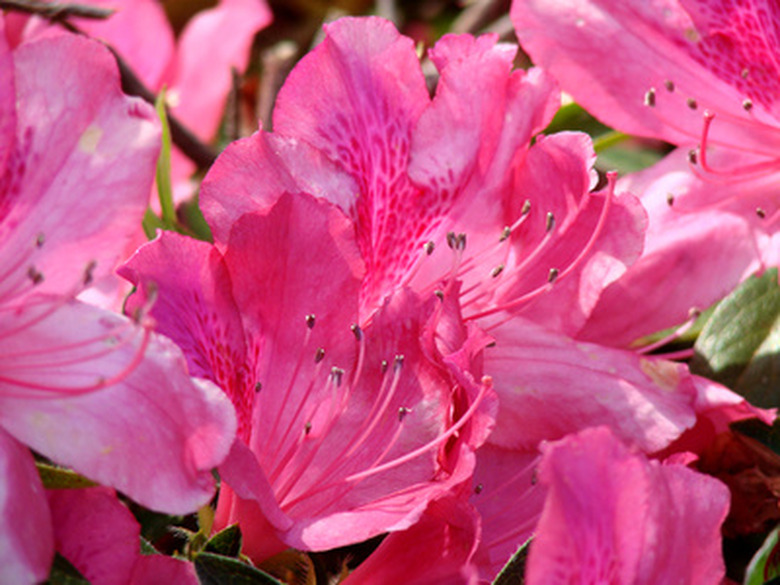How To Grow Azaleas In Houston
Things Needed
- Soil pH test kit
- Sphagnum peat, iron sulfate or elemental sulfur (optional)
- Sand, compost and peat moss (optional)
- Pine needle or pine bark mulch
- Fertilizer formulated for acid-loving plants
Drive around East Texas in the spring and you'll be surrounded by azaleas. Houston is one of seven cities certified by the Azalea Society of America. The Houston area's frequent rainfall, high humidity, abundant shade and sandy soil are ideal conditions for these members of the Ericaceae family.
Step 1
Choose a variety that grows well in the Houston area. Among the varieties recommended by the Houston-based Teas Nursery are Fashion, with its salmon-orange flowers; Formosa, an extremely hardy plant with deep-rose to purple flowers; G.G. Gerbing, with pure white flowers; George Taber, with pale lavender flowers; Hino Crimson, with scarlet flowers; and Red Ruffles, a low-growing azalea with bright red double flowers.
Step 2
Select a planting site that faces east or receives filtered shade. Houston's hot afternoon summer sun can be deadly to azaleas.
- Drive around East Texas in the spring and you'll be surrounded by azaleas.
- Choose a variety that grows well in the Houston area.
Step 3
Test your soil's pH, either with an at-home kit or through your local cooperative extension service. According to Texas A&M Extension, soil in the Houston area tends to be slightly alkaline, and azaleas prefer acidic soil. Amend your soil so that it is slightly acidic, between 5.5 and 6.0, by adding sphagnum peat, iron sulfate or elemental sulfur. If your soil has a lot of clay, lighten it by adding sand, compost and peat moss.
Step 4
Water recently planted azaleas every day. Once established, azaleas will need at least 1 inch of water per week. During the worst of Houston's dry, summer weather, you may need to water every two days to keep your plants from wilting. Although azaleas do not like soggy soil, their shallow root systems dry out quickly. Use a pine bark or pine needle mulch to retain moisture and add a bit more acidity to the soil.
- Test your soil's pH, either with an at-home kit or through your local cooperative extension service.
- If your soil has a lot of clay, lighten it by adding sand, compost and peat moss.
Step 5
Use a fertilizer formulated for acidic plants such as azaleas and rhododendrons. Fertilize after the blooms all die, then once a month during the growing season.
